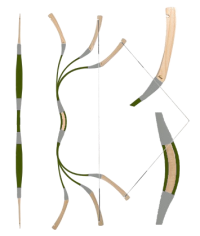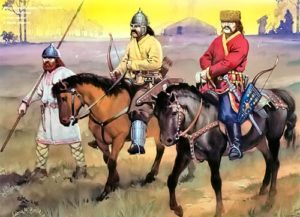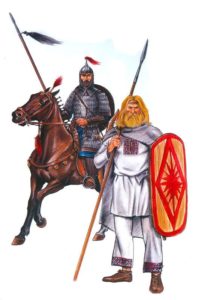Avar Archery
Avar Bow
Some bows have been recovered from Avar cemeteries and burials throughout Central Europe shedding some light on the lives of these mysterious nomads. Bows were rarely buried with most individuals whose graves were unearthed, suggesting that higher-ranking members of Avar society were likely buried with bows and other weapons. Jewelry, such as earrings, necklaces, belt as well as belt buckles, ceramics and animal bones were also discovered in some graves.
CLICK HERE TO BUY AN AVAR BOW!

Pictures above are the Lajos Kassai Avar horsebow. Production of this bow started in 1992 and it is a popular model to this day. Celestino Poletti established a world record of 24 hours archery in 1997 with this model Avar bow. During the 24 hours, the number of his shots was 13,180.
http://www.polettiarchery.com/
Pannonian Avars
The Avars were a nomadic people who inherited most of the domains of Atilla’s Huns in Central Europe, mostly in modern-day Hungary (Pannonian Basin) and the Balkans where they subjugated and over time intermixed with the local Slavic population. Little is known about the origins, culture or language of the Avars, but they are believed to have migrated from Mongolia, to escape persecution by a Turkish tribe known as the Gokturks.

Avar Language
It is believed that the Avars were likely a fluid political organization consisting of many different ethnic groups, and speaking a variety of languages. There is some speculation that they spoke a Turkish language, but Iranian and Hungarian have also been suggested. Some scholars argue that there is a continuity between Attila’s Huns (circa 430 A.D), the Avars (circa 600 A.D. to 900 A.D.) and finally the Magyars (900 A.D.) in terms of a dominant tribe that spoke a Hungarian (Magyar) language.

Avar Khaganate
These nomadic mounted warriors first appear in Europe in the mid-sixth century A.D., sending an embassy to Constantinople to make contact with the Byzantine Empire. After being paid off by the Byzantines, the Avars moved northwest into Germania, where the mighty Frankish King Charlemagne was to oppose them. The Avars relied primarily on mounted archery when conducting themselves in battle. Curved sabers and stirrups were introduced by these mounted warriors as the continued their incursions into Europe.

CLICK HERE FOR BOOKS